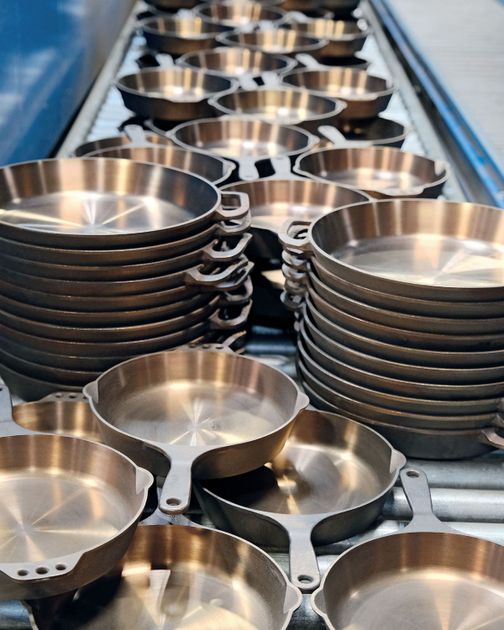Label
All
0
Clear all filters
Prue Leith's latest book is now on ckbk. Get 25% off ckbk Membership
Smithey Ironware
Appears in
By Sammy Monsour and Kassady Wiggins
Published 2024

Cast-iron cookware has a long and fascinating history in the United States. In the nineteenth century, foundries in Pennsylvania, Ohio, and Tennessee produced a wide range of cast-iron cooking vessels, from skillets to Dutch ovens. Companies such as Griswold, Wagner, and Lodge became household names, and their products were known for their high quality and durability.
However, the rise of nonstick Teflon technology in the mid-twentieth century had a significant impact on the cast-iron cookware industry. Nonstick pans were lighter and less expensive, and many consumers opted for this new technology over traditional cast iron. As a result, some cast-iron foundries struggled, and the quality and reputation of cast-iron cookware declined. Beloved companies, such as Griswold and Wagner, which had already been struggling throughout the Great Depression, could not survive the low demand caused by the newfound popularity of Teflon. Lodge also felt the impact of this shift in consumer preferences, but the company adapted by expanding its product line to include enamel-coated cast-iron cookware and other products. Over the years, Griswold and Wagner were both bought and sold numerous times, and all of that trading affected their quality and reputation. Today, any serious collector disregards pans forged by those two icons past the 1950s.
Part of
Advertisement
Related Recipes
-
-
-
-
Related Reference
-
-
-
-
Advertisement
The licensor does not allow printing of this title




